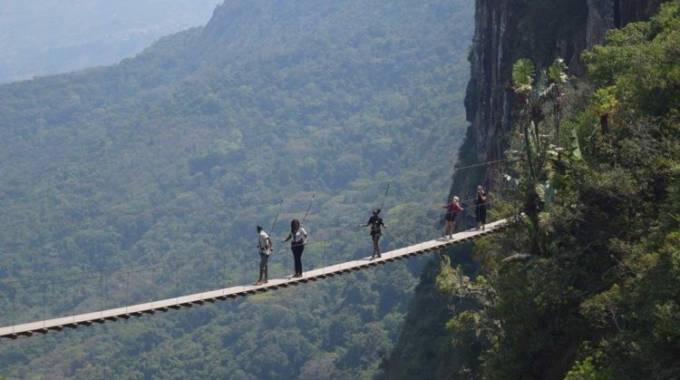
The ManicaPost

AS a versatile province endowed with minerals, good soil and climate, as well as world class tourism sites, Manicaland’s contribution to the attainment of Vision 2030 is crucial.
Manicaland Province is gifted with minerals and produces the bulk of Zimbabwe’s diamond quantum.
Other minerals found in the province include gold, lithium, tantalilte, phosphate, copper, iron and marble, among many others.
It is also home to excellent tourism sites and facilities such as the Mutarazi Zipline and Skywalk.
The province’s mountainous terrain and its spectacular views also contribute significantly to the provincial Gross Domestic Product (GDP) as tourists flock to Manicaland to appreciate Mother Nature.
Agriculture remains a top economic activity in Manicaland as the agro-ecological regions one to five provide opportunities for dry land farming, irrigation and greenhouse farming.
Due to this, a wide range of crops thrive in Manicaland, including horticultural crops, timber plantations, tea and coffee, macadamia nuts and fruits (bananas, peaches, mangoes, apples and avocados).
Some of the economic benefits of the agricultural produce is at individual and household level, while others are at national level through employment creation and income gains across value chains.
It is therefore not surprising that Manicaland’s GDP has been on an upward trend for the past few years.
The central core of infrastructure for development is the province’s road network, which is backed by a railway system.
The internal road system connecting the districts is tarred, which is a plus for the tourism sector as it thrives on accessibility.
The icing on the cake has been the rehabilitation of the Harare-Mutare Road.
The road network spreads to Masvingo and tourists can go all the way to Beira in Mozambique.
The province is also the strategic gateway to the sea as it connects the country with Beira in Mozambique through Forbes Border Post.
The movement of commercial cargo through Zimbabwe has been improving steadily, especially with the opening of the boarder 24/7.
This has seen the country recording more revenue.
In the energy sector, Manicaland is making significant strides in terms of power generation, especially when it comes to hydo-power.
Due to the existence of numerous waterfalls in the province, Manicaland has seen more Independent Power Producers (IPPs) setting up mini-hydro-power stations.
To date, Mutasa is now power sufficient and this has seen businesses operating in the area getting a boost as they are never forced into downtimes by power cuts.
In fact, the IPPs in Mutasa are feeding their excess power into the national grid.
The investment in ethanol in Chipinge has also been a significant economic milestone, especially given the number of jobs that were created as a result of the vast project.
In the agriculture sector, Government has been working round to clock to construct dams and set up irrigation schemes in order to eliminate the over-reliance on rain in the sector.
Major dams include the Osborne Dam in Mutasa District, which is one of largest inland dams in Zimbabwe.
Manicaland also boosts of Marovanyati Dam in Buhera, as well as the Muchekeranwa Dam which boarders Manicaland and Mashonaland East provinces.
The construction of both dams were fast-tracked by the Second Republic as a means to catapult Manicaland’s economic growth.
Resultantly, irrigation schemes have been set up around these water bodies and many others.
The thriving Nyakomba and Nyamaropa Irrigation Schemes in Nyanga, Chiteme Irrigation Scheme in Makoni and Musikavanhu B2 Irrigation Scheme in Chipinge, among others, have seen food security for the people of Manicaland improving, with the excess produce finding its way to the markets.
But apart from food security, the dams are also boosting other commercial activities.
For instance, at Osborne Dam, tourists also get to enjoy bass fishing, birding, pony rides, wind surfing and canoeing.
The water bodies are therefore boosting both the agriculture and tourism sectors.
It is quite encouraging to note how each element of the economy is contributing to the growth of the provincial GDP, and ultimately the national GDP.
As a nation, we have the formula to attain Vision 2030, we now only need to use it wisely and attain an upper middle income economy within the set timelines.



